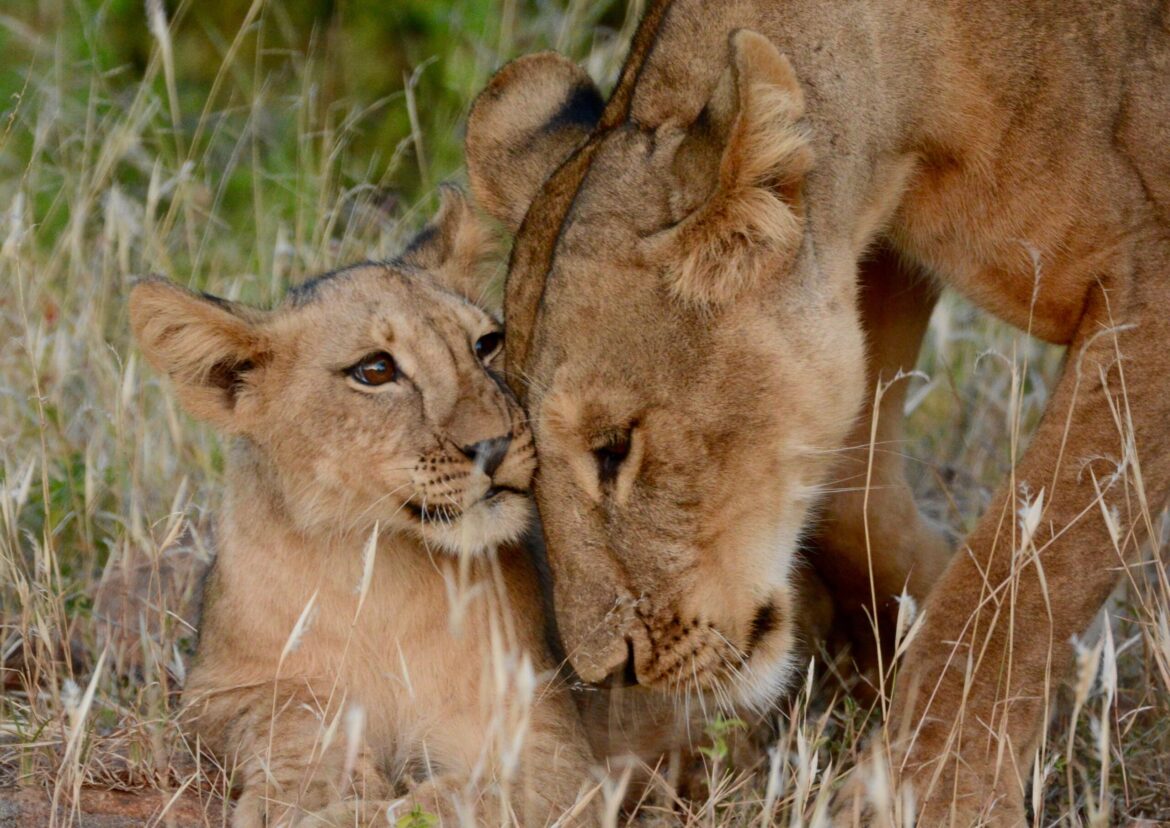This is the only place on Earth where lions live alone
By Christine Dell’Amore
They named her Magilani—“the clever one”—because she had to be smart to live alone here, in the harsh deserts of northern Kenya.
Not only did she eke out an existence, the big cat successfully raised cubs while sharing the land peacefully with the Samburu people, a tribe of semi-nomadic pastoralists.
“I kept wondering, How did this lion do this by herself? She survived to perfection,” says Shivani Bhalla, founder and executive director of Ewaso Lions, an organization that promotes coexistence between humans and wildlife who live along the Ewaso River.
When Bhalla moved to the Samburu region in 2002, “I kept expecting to see large prides of lions. Growing up, my dad would take me on safari at Masai Mara [National Reserve],” she says.
Instead, she learned from the local people that population of about 50 lions, which move between community and protected lands, live alone—the first such solitary population to be scientifically described.
“Everyone keeps labeling lions as the only social cat, but they’re not really social here,” says Bhalla, whose research was published in her Ph.D. dissertation.
In other words, living in a pride is not necessarily the default for lions.
Bhalla’s findings dovetail with existing research that shows lions are “surprisingly flexible,” says Meredith Palmer, a postdoctoral researcher at Princeton University studying interactions between lions and their prey.
That ability to adapt to human landscapes adaptability is going to be crucial for the species’ future, Palmer notes—the African lion has disappeared from 94 percent of its historic range, in large part because of habitat fragmentation, loss of prey species, and conflict with humans. There may be as few as 20,000 left in the wild.
“In East Africa especially, if lions are going to survive, they’ll need to learn to live with people,” she says. Living a solitary life is one thing that may help them.
R-e-s-p-e-c-t
In addition to Magilani, who likely died in 2011, Bhalla has collared two other female lions, Nadala and Naramat. Her research area covers about 1,200 square miles of lion habitat in Samburu, Buffalo Springs, and Shaba National Reserves, as well as five community conservancies, in which local people benefit from protecting wildlife, such as from ecotourism.
Naramat, who raised three litters of cubs in this study area, now lives about 65 miles south, in another community conservancy, where she’s raising a new set of cubs.
By tracking Naramat’s movements over the years, Bhalla and colleagues have learned that she knows her habitat well, leaving areas quickly in which she feels unsafe and figuring out how to navigate human settlements and protected areas.
Samburu moms are also very resourceful. For instance, in lion prides, females leave their cubs with “babysitters,” but these lionesses take their cubs with them everywhere, even on the hunt, Bhalla says. In fact, Magilani taught her three-month-old cub to take down a small antelope, a “remarkable” feat, she says.
You won’t see male lions lazing about much, either. They’re also solitary, very active hunters; males and females come together briefly to mate.
“If you brought a Masai Mara lion to Samburu, it wouldn’t survive a day. They’re fat and spoiled,” she adds, laughing.
“You have to give the Samburu lions a lot of respect.”
Family dynamics
Most people think “prides define what it is to be a lion,” Palmer says, but that’s because the first long-term studies of lions took place in East Africa, namely in the Masai Mara National Reserve and in Serengeti National Park, Palmer says.
On these prey-rich savannas, life is good—so good that real estate is at a premium. Living in groups allows male lions to defend their territories against invading males hoping to snatch their little slice of heaven, and the tight-knit group structure also protects cubs, according to research by the University of Minnesota Lion Center, where Palmer did her Ph.D.
This research also has found a “great degree of flexibility in lion behavior under extremely different kinds of environmental and social conditions,” Palmer says.
For instance, smaller prides tend to carve out big territories across the more barren East African plains, where they have to cover more ground to find food. Larger prides defend smaller, but higher-quality, territories around valuable water sources with lots of prey.
In fact, there are many reasons not to form prides at all, as most of the world’s big cat species have already figured out. For one, you don’t have to share food—especially if there’s not a ton of it, as is the case in the arid Samburu.
It would also be hard for a lion pride to maintain a defined territory in a patchwork of community lands and protected areas, which is another reason why the big cats fly solo. (Read how “living walls” have stopped lions from killing livestock in Tanzania.)
Their loner lifestyle obviously works, Bhalla adds: “Some [Samburu] lions survive up to 16, which is amazing for such a challenging landscape.” In comparison, a Serengeti female can live up to 19 years.
Win-win situation
Many Samburu people are protective of the big cats that live among them—they named Naramat “the caring one” because of her excellent mothering, according to Bhalla.
Such appreciation gives these lions a greater chance for survival, she says. (Read how Samburu warriors are pledging to protect lions.)
“The more people that know and name the lions, the more ownership they have toward them,” she says. Two lions died in conflicts with people in the region in 2018, down from five deaths in 2017.
Palmer says the Samburu lions’ success bodes well for populations in East Africa and South Africa, where the predators are being squeezed out of parks and into human-occupied lands.
“If lions can live in the community and the community can live with the lions,” she says, “that’s a win-win situation.”
You can read the original article posted to the National Geographic website here: https://www.nationalgeographic.com/animals/article/solitary-lions-kenya-samburu





